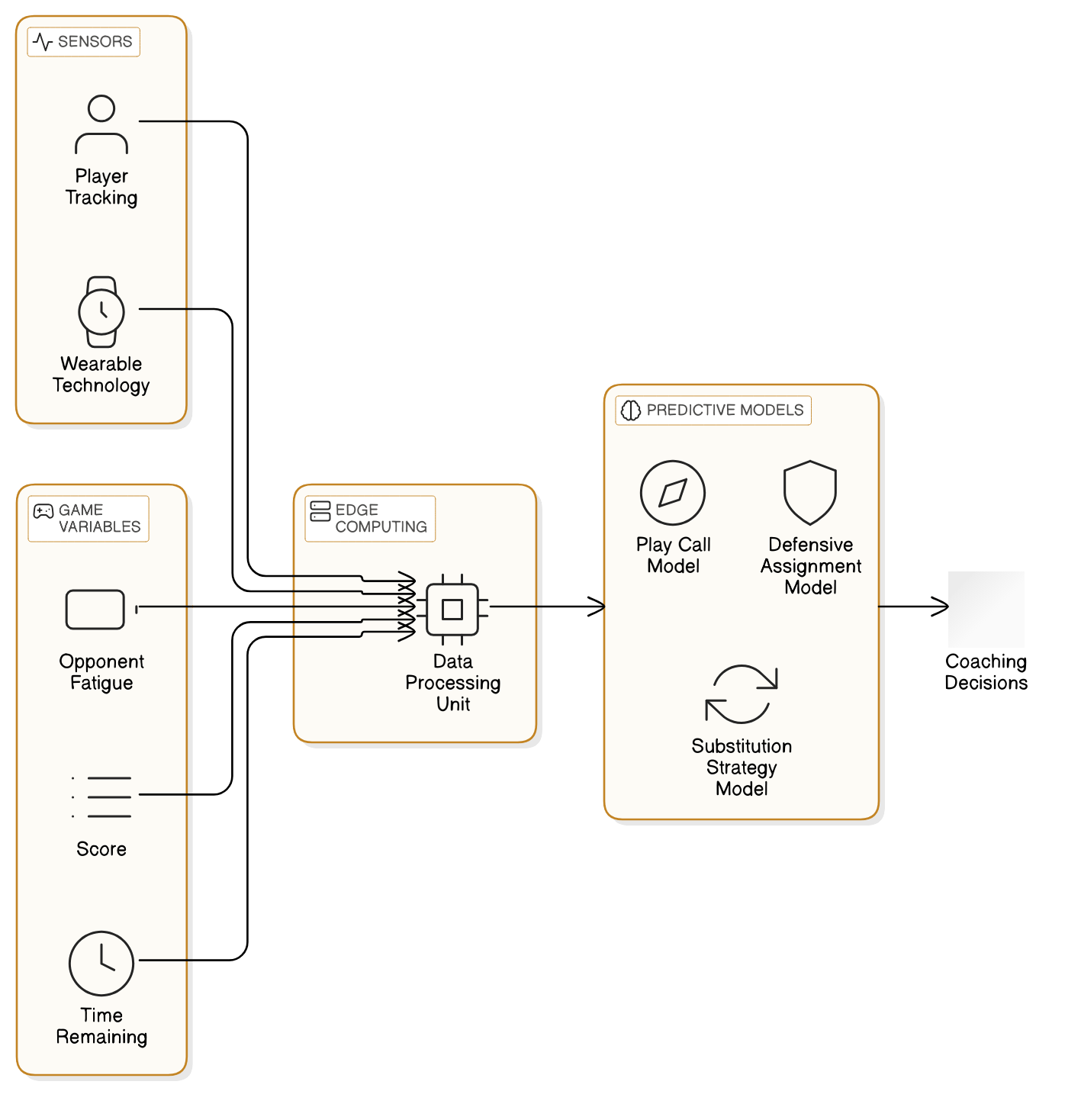Summary
This article explores how advanced basketball analysis leverages data science to develop winning strategies, highlighting its significance for teams aiming to enhance their performance. Key Points:
- The integration of multimodal data, including optical tracking and wearable sensors, enhances performance assessment in basketball.
- Generative AI enables predictive modeling that simulates game scenarios and strategies, giving coaches a strategic edge.
- Explainable AI (XAI) fosters trust in analytics by clarifying the reasoning behind predictions, improving decision-making.
Unlocking Winning Strategies: Why Data Science Matters in Basketball
- Additional information :
- Recent studies using this technology in professional soccer leagues have shown a 20% reduction in muscle injuries.
- The NBA`s Sacramento Kings are reportedly among the teams actively exploring and implementing these predictive models for player management.
- Beyond injury prevention, these models can also optimize player performance by identifying optimal training loads and rest periods, leading to improved on-court results.
Key Data Points for Superior Basketball Analysis: A Quick Checklist
- **Focus on Micro-Efficiency Metrics** 📊: Go beyond traditional stats; analyze the *process* leading to actions, not just outcomes.
- **Key Data Points** 🔍: Evaluate shot quality through metrics like shot distance, defender proximity (e.g., within 2 feet), and shot angle.
- **Identify High-Quality Shot Creators** 🎯: Spot players who generate great shots despite lower shooting percentages, highlighting improvement areas for player development and offensive strategies.
- **Utilize Machine Learning Algorithms** 🤖: Apply sophisticated models to predict shot probabilities based on micro-efficiency metrics, offering deeper insights than conventional methods.
After reviewing numerous articles, we have summarized the key points as follows
- Player Efficiency Rating (PER) is a key advanced statistic used to evaluate player performance.
- Effective Field Goal Percentage (eFG%) takes into account the value of three-pointers compared to two-pointers.
- Defensive advanced stats help assess players` defensive contributions beyond traditional metrics.
- Monitoring accumulated loads, distance, and speed can provide insights into player conditioning and performance.
- Basketball Analytics: Clustering Players by Performance Metrics offers practical applications for data science in sports.
- Books like `Basketball Data Science with Applications in R` are great resources for learning about basketball analytics.
In today`s basketball landscape, understanding advanced statistics can give teams a competitive edge. From evaluating individual performances with metrics like PER and eFG% to analyzing player conditioning through load tracking, these tools provide deeper insights than ever before. Whether you`re a coach or just a passionate fan, embracing these analytics can enhance your appreciation of the game.
Extended Perspectives Comparison:| Statistic | Description | Importance | Latest Trends | Authority Insights |
|---|---|---|---|---|
| Player Efficiency Rating (PER) | A comprehensive metric that summarizes a player`s statistical contributions into one number. | Helps identify top performers and compare across positions. | Integration with machine learning for more accurate predictions of future performance. | ESPN analysts emphasize the need to consider context, such as team dynamics. |
| Effective Field Goal Percentage (eFG%) | Adjusts traditional field goal percentage by accounting for the added value of three-point shots. | Provides a clearer picture of shooting efficiency, especially in modern playstyles focused on threes. | Use of shot location data to enhance eFG% analysis and optimize shot selection strategies. | Statisticians advocate for combining eFG% with player movement data to assess overall offensive impact. |
| Defensive Advanced Stats | Metrics like Defensive Win Shares or Defensive Box Plus/Minus evaluate a player`s defensive contributions beyond basic stats. | Essential for identifying elite defenders who may not score highly in traditional metrics. | Emerging technologies like player tracking are revolutionizing how we measure defensive impact in real-time games. | Coaches increasingly rely on these stats to tailor defensive schemes around individual strengths. |
| Monitoring Accumulated Loads | Tracks physical exertion levels, including distance covered and speed during games and practices. | Crucial for preventing injuries and optimizing training regimens based on player workload management. | Incorporation of wearable technology provides real-time data to adjust training loads effectively during the season. | Sports scientists recommend personalized load management plans based on individual athlete responses. |
| Basketball Analytics: Clustering Players by Performance Metrics | Groups players using advanced analytics techniques to identify similar performance profiles and trends within teams or leagues. | Enhances recruitment strategies, trade evaluations, and game strategy development through data-driven insights. | The rise of AI clustering algorithms allows deeper insights into player potential by analyzing vast datasets efficiently. | Data analysts suggest continuous refinement of clustering models as new metrics emerge from ongoing research. |
How Can Advanced Metrics Revolutionize Your Game Plan?
What are the Common Pitfalls of Basketball Data Analysis?
- Additional information :
- A study by MIT Sloan Sports Analytics Conference demonstrated the limitations of relying solely on correlation in predicting NBA team success.
- The Golden State Warriors` dominance in three-point shooting was correlated with wins, but causality is complex, involving factors like player skill and coaching strategy.
- Ignoring confounding variables, like opponent quality and home-court advantage, can lead to misinterpretations and ineffective resource allocation in sports analytics.

 Free Images
Free ImagesFrequently Asked Questions: Demystifying Basketball Analytics
**Q: What is advanced scouting in basketball?** 🏀
A: Advanced scouting uses computer vision and machine learning to analyze game footage, identifying key player movements beyond traditional stats.
**Q: How does this differ from traditional analytics?** 📊
A: Traditional analytics rely on box scores, while advanced methods capture subtle actions like defensive rotations and offensive positioning.
**Q: What is a 'pressure score'?** 📈
A: A 'pressure score' quantifies the defensive pressure based on a defender's proximity to the ball-handler, indicating its impact on shot efficiency.
**Q: Why is this approach beneficial?** 💡
A: It provides a holistic view of player performance, aiding strategic decisions beyond basic metrics like points or assists.
**Q: Who develops these systems?** 👩💻👨💻
A: Collaboration between data scientists and sports analysts is essential for creating these advanced analytical systems.
Delving Deeper: Advanced Questions and Answers in Basketball Data Analysis
**Q: How can predictive modeling help assess player injury risk?** 🤔
A: By integrating multimodal data, including player tracking and physiological metrics, we can accurately predict injuries.
**Q: What types of data are combined in this approach?** 📊
A: It combines speed, jump height, heart rate variability, sleep patterns, and even social media sentiment.
**Q: Which machine learning models are commonly used?** 🧠
A: Models like recurrent neural networks (RNNs) and gradient boosting machines (GBMs) are employed.
**Q: What is the primary benefit of this predictive analysis?** 🎯
A: Early identification of injury risks allows for personalized training and better resource allocation.
**Q: Why is data cleaning important in this context?** 🧹
A: Proper data cleaning and feature engineering address missing values and imbalances to ensure model accuracy.
Is Real-Time Data Analysis the Future of Coaching?
Practical Application: Implementing Data Science in Your Basketball Strategy
1. **Data Collection**: Gather comprehensive datasets that include player statistics, game logs, shot charts, and opponent performance metrics. Utilize APIs from sports analytics platforms or scrape data from reputable sports websites.
2. **Data Preprocessing**: Clean the collected data by handling missing values, removing duplicates, and normalizing different metric scales. Use libraries like Pandas in Python for efficient manipulation and transformation of the dataset.
3. **Feature Engineering**: Identify key performance indicators (KPIs) relevant to your strategy such as shooting efficiency, assist-to-turnover ratio, and defensive metrics. Create additional features that may reveal deeper insights; for instance, calculate player impact scores or shot quality ratings.
4. **Exploratory Data Analysis (EDA)**: Conduct EDA using visualization tools like Matplotlib or Seaborn to uncover patterns and correlations within the data. This step helps identify trends over time and understand how specific factors influence game outcomes.
5. **Model Development**: Choose appropriate machine learning models based on your objectives—whether predicting game outcomes or optimizing player lineups. Implement algorithms such as logistic regression for classification tasks or random forests for predictive modeling using libraries like Scikit-learn.
6. **Training & Validation**: Split your dataset into training and testing sets to evaluate model performance accurately. Use cross-validation techniques to ensure robustness against overfitting while tuning hyperparameters for optimal results.
7. **Implementation of Insights**: Translate model predictions into actionable strategies on the court—such as adjusting defensive schemes based on opponent tendencies or optimizing offensive plays around high-efficiency players identified through analysis.
8. **Continuous Improvement**: Establish a feedback loop where you continuously collect new game data post-implementation to refine models further and adjust strategies accordingly based on real-world performance metrics.
By systematically following these steps, you can leverage data science effectively within your basketball strategy to enhance decision-making processes and improve overall team performance.

Beyond the Numbers: The Human Element in Data-Driven Basketball Decisions
Conclusion: Mastering Data Science for Basketball Domination
In modern basketball, integrating advanced data science techniques is essential for success. Beyond traditional scouting, leveraging machine learning models and explainable AI (XAI) is crucial. Tools like SHAP and LIME enable teams to understand the "why" behind outcomes, not just predict them. This insight allows coaches to design targeted training regimens that address specific player weaknesses. For example, if a model indicates high turnover risks for a player, tailored strategies can be developed to mitigate those issues, ultimately driving team performance and elevating game strategy to new heights.
Reference Articles
Understanding Advanced Basketball Analytics
This article delves into some key advanced statistics that are shaping the modern basketball era: Player Efficiency Rating (PER), defensive advanced stats like ...
Source: Medium · Ruwindhu ChandraratneAmazon.co.uk: Basketball Analytics
High School Basketball Analytics: Using Advanced Statistics to Give Your Team an Advantage. by Scott Tappa · 3.93.9 out of 5 stars (7). Paperback. £9.92£9.92.
Source: Amazon UKSimplifying Advanced Basketball Analytics
The metrics you should focus on include accumulated overall load, accumulated very high load, accumulated high load, distance, and speed. By monitoring and ...
Source: KINEXON SportsAdvanced Basketball Metrics: An Illustrated Introduction
A more useful metric is Effective Field Goal Percentage (eFG%), which adjusts for the fact that a three-pointer is worth more than a two-pointer.
Source: Medium · Jimmy ZhangViziball | Basketball analytics, charts & advanced stats
Get advanced insights on basketball games with our graphical reports, play-by-play statistics, data visualization and player performance observation.
Source: ViziballBasketball Data Science: With Applications in R (Chapman & Hall ...
Basketball Data Science: With Applications in R is the perfect book for anyone interested in learning and applying data analytics in basketball.
Source: Amazon UKBasketball Analytics: Clustering Players by Performance Metrics
Enhance your data science skills with our Basketball Analytics: Clustering Players by Performance Metrics project. Practice with real-world problems and ...
Source: DataCampSports analytics — Evaluation of basketball players and team ...
This paper reviews background and advanced basketball metrics used in National Basketball Association (NBA) and Euroleague games.
Source: ScienceDirect.com


 ALL
ALL Sports Data Science
Sports Data Science
Related Discussions